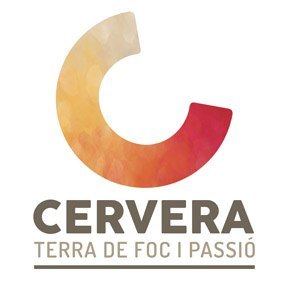Monday 22 the campaign has started in July 2024 of excavations at the archaeological site of the monastery of Sant Pere el Gros de Cervera, which will be executed in two phases during the months of July and August.
In a first phase, the archaeological work will be carried out through a work field, organized by the General Directorate of Youth of the Generalitat and the Paeria de Cervera; and in a second phase, through a preventive archaeological intervention subsidized by the Department of Culture of the Generalitat. All phases of the campaign will be developed under the scientific and technical direction of the team of archaeologists attached to the University of Lleida (UdL).
In the field of work, managed by the leisure cooperative Qualia, a total of 13 teens, of among 15 i 17 years, coming from various parts of Spain. During their two-week stay in the city, they are based at the Jaume Balmes school, where they use the gym and the dining room. They combine the archaeological work in Sant Pere el Gros, with activities to discover Cervera, the environment and Catalan culture.
The direction of the excavations is in charge of a team of researchers and professional archaeologists attached to the UdL, in accordance with the framework agreement of col·collaboration, signed in November of 2023, between the Paeria de Cervera and the University of Lleida for the research and heritage recovery project of the Archaeological Site of Sant Pere el Gros.
Members of the La Nova association also actively participate in the work, organization from Cervera that works for the conservation and dissemination of the town's heritage and culture.
The first day, Monday 22 July, the head father has visited the site, Jan Pomés; the councilor of Historical and Archaeological Heritage, Monte Closa; and the Councilor for Urbanism, Antonio Delgado, who welcomed all the participants and thanked them for their work in the recovery of Cervera's heritage.
Archaeological excavations
The main objective of the archaeological campaign is to continue the work of the year 2023. This will make it possible to deepen the knowledge of the internal distribution of the medieval monastic complex, while at the same time it is expected to obtain new data on the previous occupation of the place in the Ibero-Roman period.
It becomes urgent to carry out the felling of the pine forest that covers a large part of the archaeological remains, both for security reasons, for the prevention of possible risks when working on the site or opening it up to the public, as because the trees and their roots are seriously affecting the preservation of the archaeological remains and preventing the continuity of scientific research.
The felling of the trees will be carried out by a specialized company, under the supervision of the team of archaeologists from the University of Lleida, and with the corresponding authorization of the General Directorate of Cultural Heritage and the Department of Climate Action of the Generalitat.
Sant Pere el Gros
The church of Sant Pere el Gros has a unique round plan. It is the most outstanding element of the entire monastic ensemble and, from 2003, it is declared a cultural asset of national interest (BCIN). The temple maintains its integrity and is in a very good state of preservation. However, the other monastic dependencies are preserved torn down and hidden under the sun. The first archaeological research work on the monument was carried out in the 1960s by Agustí Duran and Sanpere. L’any 2010 a specific archaeological intervention was carried out and the 2016 a consolidation and restoration campaign. From 2021 excavation work has resumed with the aim of improving knowledge of the monument and the archaeological site that hides its subsoil and to enrich the explanatory discourse and, in the last instance, value and make visible the heritage wealth of this medieval archaeological and architectural complex with Iberian and Roman antecedents.

